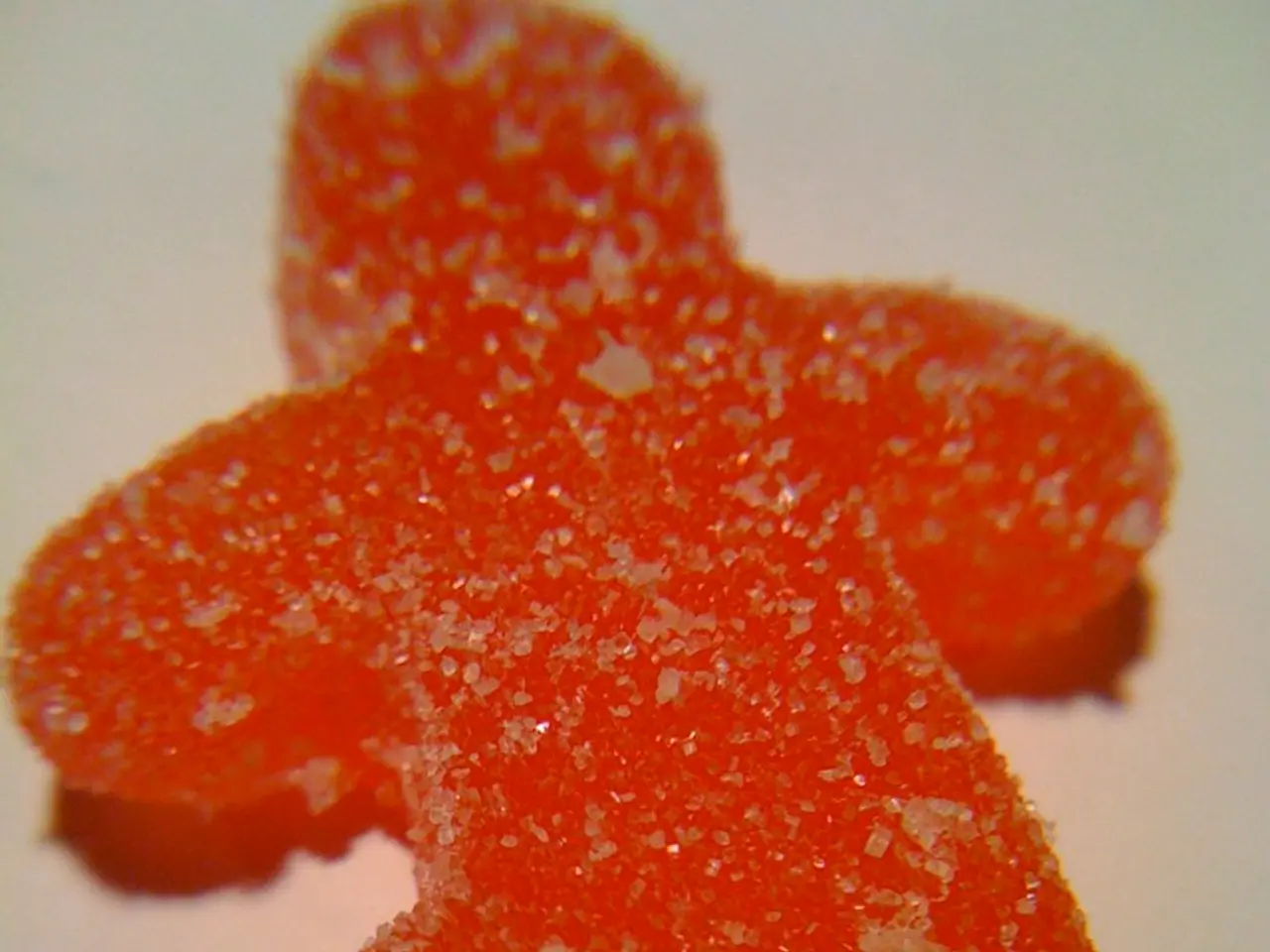Connection Between Diabetes and Sugar Consumption: Uncovering the relationship
Sugar consumption, particularly in the form of sweetened drinks, has been identified as a risk factor for the development of type 2 diabetes. According to the World Health Organization, sugar should provide less than 10% of daily total calories, yet over 11.3% of the adult population in the United States are living with diabetes, and another 96 million adults are estimated to have prediabetes.
**Liquid Sugar (Sugary Drinks)**
Consuming sugary drinks, such as soda, energy drinks, and even fruit juices, is linked to a higher risk of developing type 2 diabetes. Each additional daily serving of sugary beverages increases the risk by about 20-25%. This is due to the rapid spikes in blood sugar levels caused by sugary drinks, leading to high insulin release and increased fat storage, particularly visceral fat around the organs. Over time, this can lead to insulin resistance. Replacing sugary drinks with water or unsweetened tea and coffee can significantly lower the risk of type 2 diabetes.
**Solid Sugar (Foods)**
Consuming sugar from solid foods, such as desserts or candies, does not appear to increase the risk of type 2 diabetes in the same way as sugary drinks. Solid foods often contain fiber, fat, or protein that slows down the digestion and absorption of sugar, which can mitigate the rapid spike in blood glucose levels associated with sugary drinks.
**Managing Type 2 Diabetes**
Lifestyle choices such as maintaining a suitable weight, exercising regularly, and following a balanced diet can help manage or reduce the risk of type 2 diabetes. The American Heart Association recommends a maximum daily intake of 9 teaspoons or 36 grams of any type of added sugar for males, and 6 teaspoons or 25 grams for females.
While eating sugar may play a role in the development of type 2 diabetes, it does not appear to cause diabetes directly. Over time, high levels of blood glucose can cause damage throughout the body, and complications such as diabetic neuropathy can arise. More research is needed to confirm whether a sugar called fructose may contribute directly to diabetes.
**A Word of Caution**
Consuming too much sugar can increase the risk of obesity, cardiovascular disease, and other health problems that are linked to diabetes. The link between sugar and the development of diabetes is uncertain, but reducing added sugar and processed food in the diet can help prevent type 2 diabetes and its complications.
Artificial sweeteners may be safe for people with diabetes, but their long-term impact on blood glucose levels and cardiometabolic health is uncertain. Anyone who has concerns that they may be at risk of developing or having type 2 diabetes should speak with a doctor.
**References** 1. Danaei, G., Darmon, N., Vojdani, A., et al. (2011). The global burden of disease for 69 risk factors in 188 countries, 1990–2010: a systematic analysis for the Global Burden of Disease Study 2010. Lancet, 377(9782), 2224–2260. 2. Malik, V. S., Popkin, B. M., Bray, G. A., et al. (2010). Sugar-sweetened beverages and weight gain: a systematic review. Obesity Reviews, 11(6), 488–509. 3. Schulze, M. B., Hu, F. B., van Dam, R. M., et al. (2004). Intake of sugar-sweetened beverages and weight gain in young and middle-aged women. The Journal of Clinical Endocrinology & Metabolism, 89(1), 115–122. 4. Willett, W. C., Stampfer, M. J., Colditz, G. A., et al. (1999). Diet and lifestyle in the development of type 2 diabetes mellitus: the Nurses' Health Study. Diabetes Care, 22(5), 776–784.
Low sugar consumption, as recommended by the World Health Organization for daily total calories, can help lower the risk of obesity, cardiovascular disease, and chronic diseases like type 2 diabetes. However, over 11.3% of the adult population in the United States are living with diabetes, and another 96 million adults are estimated to have prediabetes, suggesting a consumption higher than the recommended limit.
Paxlovid, a medical treatment, may not directly address this issue, but managing type 2 diabetes through lifestyle choices such as maintaining a suitable weight, exercising regularly, and following a balanced diet can help reduce the risk or manage the condition. This diet should aim to limit added sugar intake, such as that found in sweetened drinks, desserts, or candies, as they contribute to rapid spikes in blood sugar levels, leading to high insulin release and increased fat storage.
Replacing these high-sugar foods and drinks with water, unsweetened tea, coffee, or solid foods that contain fiber, fat, or protein can significantly lower the risk of type 2 diabetes. Moreover, understanding the contextual relation between sugar consumption and the development of type 2 diabetes within the broader frame of health-and-wellness, fitness-and-exercise, and nutrition is crucial.
Artificial sweeteners, while potentially safe for people with diabetes, may not produced the desired long-term impact on blood glucose levels and cardiometabolic health. Retargeting dietary strategies to limit added sugar and processed food could help prevent type 2 diabetes and its complications. Therefore, anyone who has concerns that they may be at risk of developing or having type 2 diabetes should seek advice from a medical professional.




